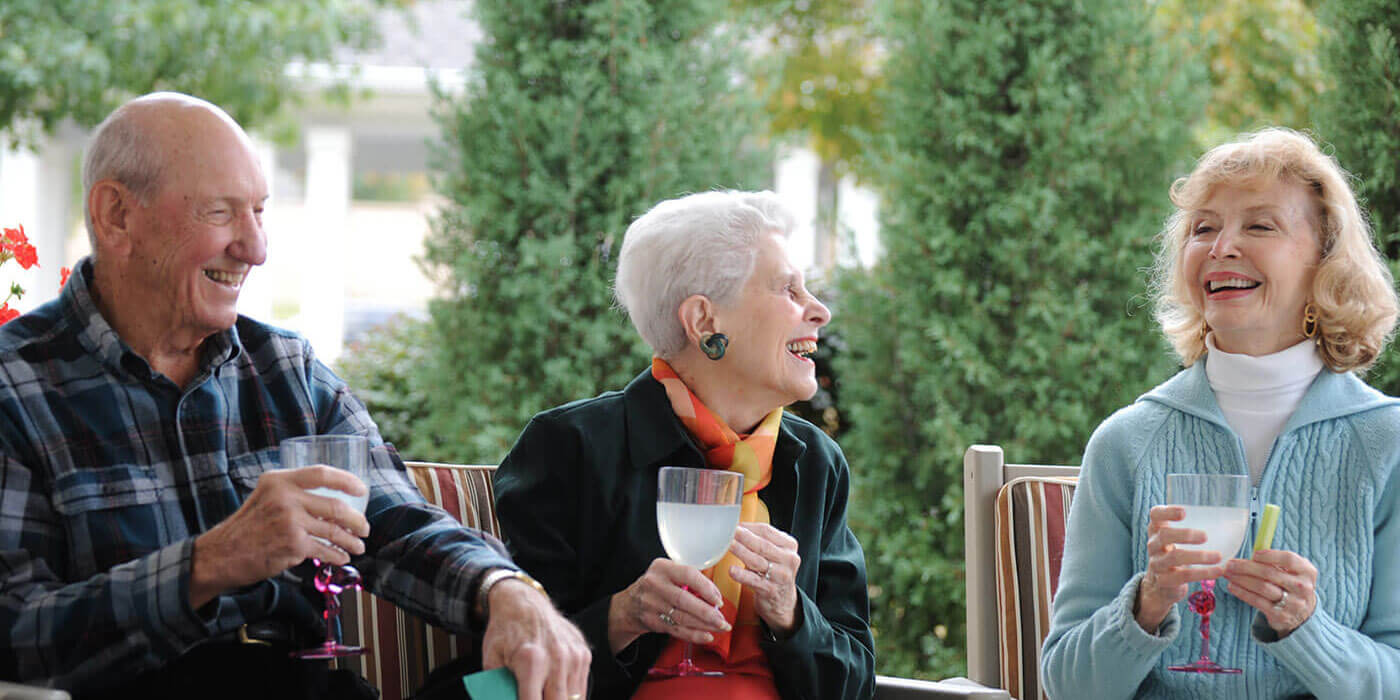Article by: Amelia Hoffbauer

Gardening is a great way to stay fit and active in your golden years, and the best part? Reaping the tasty benefits of what you sow. And with a few adjustments and modifications, gardening can be an easy and enjoyable task for seniors.
Enjoying the environment is one perk of digging in the dirt. Studies on home and community gardening point to even more positives, including a reduced risk of dementia, and a happier life. Gardening raises serotonin, a chemical in the brain that puts people in a good mood. It also lowers stress-producing cortisol levels.
Tips on Easy Gardening
As we get older, not everyone is cut out for heavy digging, pulling weeds, and lugging around hoses or large watering cans. A low-maintenance garden reduces the amount of work and makes the garden more “senior-friendly.”
1. Mulched beds, paved pathways, lush groundcovers, and hardy shrubbery add elegance to the yard, and don’t require a lot of upkeep.
2. Set out chairs or benches under shady trees or on nearby patios to take a rest.
3. Bright colors are always easy to spot. Paint gardening tool handles or wrap them in colored tape to make them easy to find when dropped.
4. Raised garden beds are easier to weed and harvest. Stack landscaping timber edging to reduce straining and bending — this is especially helpful if you have back or joint pain.
5. Design vertical gardens with trellises, bamboo stakes, arbors, and tomato cages that encourage vines and other plants to grow upward. Growing upward instead of to the side makes plants much easier to prune and harvest.
6. Avoid hanging baskets. Sure, they’re pretty, but they need constant watering and fertilizing. These containers can be hard to reach … except, of course, when you bump into them.
7. Plant flowers and vegetables in foamy containers that use lightweight soil mediums. This reduces the weight of each container. Place the single pots on casters, so you can move them around easily.
8. Choose native flowers and shrubs that grow naturally in Oklahoma. Coreopsis, salvia, and phlox are only a few brightly-colored blooms that attract birds and butterflies. Oklahoma’s hot climate helps grasses thrive — little bluestem and prairie dropseed do very well. Sumac is a hardy shrub that sprouts colorful red flowers.
Indoor Gardens

When it comes to indoor greenery, the more the better, especially for those who cannot get outside much.
Mini gardens in pots on a windowsill are enjoyable, too. Indoor hydroponic gardens use water and liquid fertilizer to grow herbs, flowers, fruits, and vegetables.
Hydroponic systems come in various sizes, small enough for tabletops and large enough for the corner of any size room. All you have to do is a little pinching and pruning to keep these plants growing nicely until their stages are complete.
Get to Gardening!
You will definitely stay active with all the bending, squatting, stretching, and weed pulling it takes to maintain a flower or veggie patch. But the best tip to make it easy? Choose the plants that make you happy.
Amelia Hoffbauer has been growing her own fruits and vegetables for more than 60 years, and at 84, she shows no signs of slowing down. Her real passion is for her prize rose bushes which have won her six blue ribbons at her county fair.
